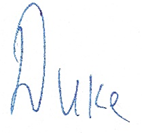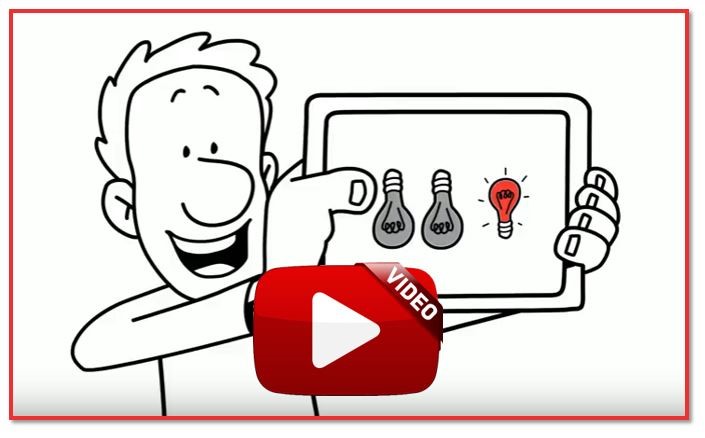‘After’ Will Be Here Soon. Time to Get Ready.
Last month, I wrote about how necessary it is to adjust operations for all businesses that were allowed to remain open ‘during’ the COVID-19 pandemic. Now, it is time for everyone to prepare for ‘after’. Anyone who follows the news (and all business owners and managers probably do) knows that slowly but surely economic activity is about to resume. Undoubtedly though, things will be different. In many aspects, the world has literally stopped – then shifted – and this is a perfect time for you to have a ‘restart’ too, including a plan to do even better than you have ever done before.
The ‘after’ business activity will renew in stages, and as you’ve probably heard from officials, “it won’t be like a light switch” – No just flicking the economy back “on” or moving a lever to the operating position. Some states and counties will open before others, meaning some businesses will be allowed to resume operations sooner, but under certain limitations and very specific guidelines.
Furthermore, customers of all types might be hesitant to fully engage, and their preferences, in many respects, have probably changed during this time of increased awareness of everything having to do with preventing getting a contagious virus, from hand hygiene to staying healthy, from exploring alternative sources for paper goods normally plentiful in every store to using delivery options.
For example, handshakes and hugs might not be as prevalent, and conducting business while having the sniffles might not be allowed. Customers of retail establishments might be on the lookout for visible, continuous sanitization procedures, and if they are not satisfied with what they see, they may leave and choose another store to patronize. Customers who used to impulse buy are now much more cognizant of what they choose to purchase, as economic concerns lead them to carefully review their carts before checking out. In addition, new concepts such as ‘social distancing’, ‘contactless delivery’, ‘touchless production’, and ‘no contact pick-up’ have emerged, and are most likely here to stay for a long time. We should all be prepared for every part of the new normal we will experience.
Whether your organization is now busier than ever due to the pandemic or had to substantially slow down, now is the time to make adjustments to your marketing activities and materials to get ready and ramped up for things to come. This is a good time to evaluate your collateral and refresh your materials to bring them up to date, and to address your customers’ new preferences and adjust or augment your marketing approach. It is time to consider your marketing activities and shift resources from the ‘old’ ways we did things to the ‘new normal’ (ways customers want to be engaged and how businesses will be allowed to operate). To be relevant and succeed in business in the environment ‘after’, you must act now. Don’t squander this opportunity or wait too long – time is of the essence to let your customers know you embrace their new preferences and are ready to get back to business, different as it may be!
Fractional CMO & Marketing is here for you – we are ready, able, and excited about what’s coming. We will work with you to evaluate everything you do for marketing, including your entire marketing collateral; and will make recommendations of what needs updates, upgrades, adjustments, and some improvement. We have the experience and skills to help you thrive in the next chapter of your business.
Take advantage of us! To do our part in the recovery, we are willing to conduct a free Marketing Needs assessment, including recommendations, free of charge and without any obligation on your part. Contact us today to get started on the next evolution of business.
Duke Merhavy, MBA, Ph.D.
President & Chief Marketing Officer
Burt’s Bees – A Honey of a Story!
By Polly Stroup, Editor and Copywriter
An entertaining brand story helps make a company relatable, “human,” and a bit more intriguing. Who can resist a good story? It’s a win for marketing content! One such brand story seems right out of a movie. Burt’s Bees began when co-founder Burt Shavitz picked up a hitchhiker in 1984 in his rusty, school-bus yellow Datsun. Burt and Roxanne Quimby, the hitchhiker, quickly “hit it off.” Are you hooked yet?
The eventual business partners had a common mission, Burt as a New York City photojournalist, and Roxanne, a San Francisco artist, wanted to escape big city life. Each had chosen to start anew in wild and remote Maine. Before meeting, Burt made a living selling honey from his roadside stand. He had found a stray beehive and decided that honey was his calling. Roxanne decided to make candles with the unused wax from his beehives. A few years later, in 1991, she made lip balm – the product that was pivotal for Burt’s Bees. See where this story is going?
The introduction of skincare products was a hit. The Clorox Company took notice and bought Burt’s Bees for $970 million. Walk into any local drugstore, and you will still find Burt’s well-known mug emblazoned on the company’s store display and packaging.
What Is Fractional CMO & Marketing?
Fractional CMO & Marketing is ‘Your Outsource Marketing Department’ when you need expert marketing leadership and marketing services to accelerate growth and improve profitability, but you’re not quite ready to hire a full-time Chief Marketing Officer or your own marketing department. Our unique arrangement is the most efficient, innovative, and cost-effective formula for you. Click on the image on the left to watch a short video.
We Help When You Need To:
- Generate more of the right kind of leads
- Close more sales faster
- Get repeat sales
- Formulate a more effective message
- Produce powerful sales tools
- Establish brand awareness, recognition, and preference
- Differentiate your brand from the competition
- Improve customer satisfaction and loyalty
- Develop lasting relationships with customers
- Introduce new products
Digging for the Gold in Your Data
By Ginger Mace, Editor and Producer
Have you ever heard the term “data mining”? Does it sound like a very complicated, involved procedure? Maybe it seems like one of those things better left for large corporations. Just the word ‘mining’ conjures up images of pickaxes swung by strong laborers and giant earthmovers considered engineering marvels. Truth be told, when it comes to data mining and marketing, there’s a lot of gold to be found in your company’s information, and you don’t need to know a mathematical wizard or have a commercial driver’s license to pan for it.
When it comes to business, data mining is simply turning raw data about your operation into useful information, also known as ‘news you can use’. This is done through analysis, with historical data and critical thinking being especially useful inputs, and finally, the findings are summarized and presented. Actionable intelligence is what comes out of this process, and can be beneficial in the areas of customer preferences, patterns in different departments, unusual or unique events that can be capitalized on, and unexpected relationships or trends between facets of your business operations or industry.
Probably the most well-known and classical example of data mining in marketing is market segmentation. A database of retail customers, for instance, can be broken down into demographic information such as age, income, and occupation; these results can be used to build profiles of probable future buyers. In a company providing services or products to another business, the sales department’s client lists can be grouped into industries, decision maker’s job title, geographical location, and more. In both examples, looking at the data for relationships – as opposed to separate, unrelated entries – provides valuable insights, and specifically for the marketing function, those include suggesting where a business should direct more of its marketing budget and messages for the most efficient use and effective results.
Marketing certainly benefits from gleaning the output of data mining, but many times, it’s also actually the department that gathers and analyzes the raw data, and gleefully comes up with gold for the entire company. Sales forecasts built through data mining can better predict when customers or clients may buy again, based on their previous buying behavior. Some businesses and industries can better plan once they realize they are cyclical, though not around typical seasonality. Data mining can be the catalyst of improved business operations and success, not just for marketing and sales, but also in every department and at every level.
 Marketing Lingo: “Segment”
Marketing Lingo: “Segment”
A market segment is a subset of the potential target market that, relatively to your offering, is:
(1) Similar Within: Refers to the members of the group having some type of commonality (needs, characteristics, etc.)
(2) Different Without: Those in the particular segment should be different than those in other segments
(3) Identifiable: The fact there are some people out there with blue eyes and curly dark hair, for example, does not necessarily mean we can identify who they are (and count how many) on your mailing list, if you wanted to promote a particular hair product that’s perfect for them
(4) Reachable: For marketing to be effective, we should have some means to communicate our message to them
(5) Significant: The size of the segment should be large enough to be worth the effort and costs associated with directing specific and unique marketing efforts towards it
‘Marketing Lingo’ is a regular column in which we define, or otherwise explain, terms often used in marketing but not necessarily correctly or properly by some
Take Advantage of Us
Call us at 888-412-2236 or use the button below to request a complimentary Marketing Needs Assessment, or to ask us a question regarding your most pressing marketing or sales challenges.





